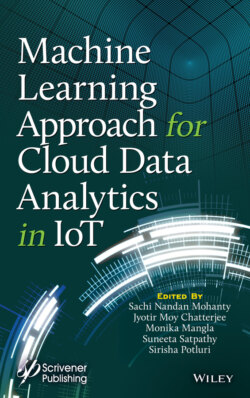Читать книгу Machine Learning Approach for Cloud Data Analytics in IoT - Группа авторов - Страница 79
2.9 Conclusion
ОглавлениеIn this strategic study, the surveyed paradigm includes the security aspect of IoT and what is being carried out over it as a thoughtful concern of today’s era and as well as the prospective which need further concern. It renders over the architectural infrastructure IOT-enabled devices and the design model of the computational intelligent approach which is applied over with machine learning algorithms. It also looks upon the perfect analysis of the vulnerabilities of the related devices over the cloud which limits the failure ratio by the use of cognitive intelligence techfacts and forms. It also overhauls the cryptographic protocols which would enable IOT devices to process the computational data signals without the interventions of intruding threats. It gives us a dynamic efficacy for a secured communication, thereby developing schemes to address the security in context. Besides, it clearly reflects the security in context to both defense as well as attack.
The machine learning algorithm acts as a cyberweapon and an automated tool for automating the correlated cyber activities, with use of which this leverages the sophisticated power of adversarial machine learning. This study can be better basis for future resources dynamically analyzing the existing security solutions and develop a scalable cyber security system. It is also observed the extracted high-order implicable technology can further be modified where single malicious node can give signals to multiple identities and thus reducing the effectiveness of their faults schemes.
Hence, we may brief up as follows: Whenever a contravention occurs, the earlier it is detected and responded to the maximum is the opportunity of reducing loss vividly in a dynamic and vulnerable incidental operation.
